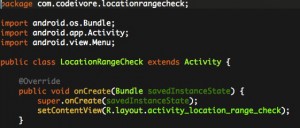


Today marks the 20th anniversary of the very first web site. It is hard for me to believe it has been twenty years since I have been working with the web for nineteen of them and it still seems like just yesterday I was learning HTML for the first time. To say that the invention of the World Wide Web changed humanity forever would not be a stretch by any means.
The web went from being a curiosity to an essential piece of our global infrastructure just like the electric grid and telephone network before it. Some countries use it for elections. Communities use the web to notify their residents of emergencies. Families and friends use it to keep in touch. Ecommerce has grown into a trillion dollar a year business. In some cases the web has even been used as a form of revolution to topple a government.
With all the ways the World Wide Web has changed the world in just twenty years one has to wonder what type of changes we will see over the next twenty years from being a more connected society.
To the next twenty!
Cheers,
–Jon

I am quite aware I have not been keeping up to date with my blog. It is unfortunate, but I have been so busy it is almost an afterthought these days.
Sometimes I really do wish there were more hours in the day. Between my family, my job at Princeton, the gym, hockey, creative writing and throwing down code for an application for my new business I am stretched pretty thin.
Hopefully soon I will be able to show off some of the stuff I have been working on!
I will be back to updating my blog once again very soon as things will be settling down soon.
Cheers,
–Jon
My 2007 17″ Macbook Pro has been a workhorse for me since the moment I bought it in October 2007. It has been my companion on visits to clients, late-night coding sessions on the couch, debugging code, and an occasional game of StarCraft 2 or Civ 5.
I don’t give a shit what people say about Apple’s pricing – for the amount of beating this thing took and the amount of work I did on it I probably would have gone through four or five PC laptops in the same time frame.
The only upgrade I ever made was installing an OWC Mercury Extreme SSD which literally made this thing fly like a brand new machine.
Unfortunately it finally succumbed to the dreaded logic board failure that this model was prone to due to the manufacturing issues with the nvidia 8600GT boards.
Oh well it was a great machine but time to shop for a new one, and to get a USB to SATA cable to get all my data off since I have not done a backup since March.
Cheers,
–Jon
For the past year or so I have slowly been getting my new business off the ground. This time I am taking my time with it doing it solo on the side while maintaining my full-time position at Princeton University. I spend some time every week throwing down code for a couple of clients and in between working on a couple of apps that I plan on releasing eventually.
Entrepreneurship is like a chronic infection – once you get the bug you usually have it for life. I definitely have the bug and have always enjoyed the fun and challenge of growing a business.
Recently while reflecting on past startups I had been involved in I caught myself in one of those would have, could have, should have moments. Fleeting thoughts about all the things we did right or wrong, things I would have done differently with the benefit of hindsight etc.
Even though every startup I was involved in was different, I came up with three simple guiding principles that should apply to every startup. While I can’t guarantee success, these values are some pretty basic cornerstones for an entrepreneur.
Control Your Burn Rate
A common theme at the startups I have worked for is that those that get funded tend to not be as conservative with spending as they should be. Spending too much on things like furniture, computers, phones, etc. Ancillary items that increase your burn rate without necessarily benefiting the core objectives.
When I first started at Inforocket back in 1999 we actually did everything as cheap as we could. Our chairs were simple cheapo chairs – some of them even metal folding chairs. Our development team worked at a big shared table (pictured above) that was made with saw horses and wooden doors bolted to the top. Our office PC’s were assembled by our team from components we bought in bulk. Everything was done as cost efficiently as we could.
As the company grew we eventually closed a second round of funding which we used to bring in some new hires. These folks came from more established businesses and were accustomed to deep pockets and nicer digs. With this we lost our discipline. In came the Herman Miller Aeron chairs, fancier desks etc.
Sure these things are nice to have but when you are an early-stage startup focused on getting the most out of your initial investment capital these things are not worth it as they do not directly benefit the goals of the business.
Save the money for the essentials.
Managing Expectations
You’d think most people would understand the concept of not over-selling themselves but sometimes the zeal of bringing in the business clouds better judgment.
Want to kill your young business fast? Promise something you can’t deliver to a customer and then string them along with excuses. Watch what happens. In the era of social media you’ll be dead in a matter of days.
This is yet another lesson I have unfortunately learned firsthand. Back in 1998 I was a co-founder for a small web development company called Fourth Degree Media Group. We were four friends with a small startup and we landed our first big client – a business that published continuing medical education (CME) materials for doctors.
We promised the client this full-blown ecommerce site where doctors could order materials, do online quizes, and get CME credits, etc. Problem was none of us had ever implemented an ecommerce site before. While we had a substantial amount of web development experience, we did mostly B2B or product marketing sites. We did not know the nuances of shopping carts, SSL certificates, security, etc.
Needless to say this was a huge failure. We wasted months of the client’s time, months of our time, and in the end we ended up giving them the money back and dissolving the business.
In retrospect the better way to handle the situation would have been to bring in help to meet the client’s needs or to ask the client initially to split the project with another shop who might be more well versed at the ecommerce implementation details.
Simply put, don’t promise the moon unless you can deliver it.
Stay Passionate
Last but definitely not least, you will probably not be successful in business if you are not passionate about what you are doing. I am sure there are some exceptions but in general your passion for what you do has a great deal of influence over your work.
I find that people with a passion for what they do will work harder at it, produce higher quality work, and don’t burnout as easily.
This is something I have really seen a lot of while working at Princeton University. Some of the scholars I work with love what they do so much that they do work from home on their days off and sometimes work on the weekends despite no pressing deadlines or pressure. They simply love what they do.
This passion for what we do also makes us better at what we do. As a developer I am constantly on blogs, mailing lists, etc. I enjoy reading about what others do, discussing with my peers the best (and worst) practices and sharing our “war stories” – this is all part of bettering myself. And there is an element of competition to in that you don’t want to be the guy among your peers producing the poorest quality work.
The moment you no longer enjoy what you are doing, it’s time to find something new.
Cheers,
–Jon

Now that I have spent a few days exploring and experimenting with the Google+ pre-launch beta test, I figured I would share my thoughts on it. This is Google’s most ambitious project to date and so far even in this early test phase what I have seen has impressed me.
I am going to make a bold statement here: Google+ is the social network many of us have been waiting for.
A good way to think of Google+ is not simply as a site, but as a meta-layer that lays over top of many of Google’s different properties and glues them together to form a really nice social platform with a nice selection of tools to control visibility of content and privacy.
At first glance Google+ seems to be similar to Facebook. The layout will be familiar and intuitive to you, utilizing a standard three-column layout. The main content area has Google+’s stream which functions largely the same as Facebook’s news feed. Here you will see posts by people you have in your circles, photos, videos, etc.
The only negative thing I have to say so far about the stream is that in this early pre-release test phase a user does not have a lot of control over sorting and display of content within the stream but I am pretty sure from stuff I have been reading more changes and features are coming to the stream before the service goes officially live. For the time being the best control I have over the stream is viewing it by circle.
As for circles, this is one of the core features of Google+ that differs it from other social platforms out there. Circles is what allows a lot of the magic to happen.
Circles are groupings of people we add and follow. Anytime you add a contact you can add them to one or more circles. The people you have in your circles have no idea what circles you have them in at all – it is invisible to everyone but yourself. This gives you the ability to group friends from different parts of your life that you may or may not want to come in contact with one another.
While we may not consider it so, our real, non-digital lives exist within a real life social network. The difference between our real life social network and our digital one is that in the real life social network we live within is comprised of many different circles of people that may never interact, but on a site like Facebook they do and sometimes this may not be desired.
A good, basic example would be work vs friends. What if you play hooky from work to go to the beach with some friends and one of your friends innocently tags a photo with you from the beach or checks you in to the bar the day you were supposedly out sick? Oops! Your boss who you added as a friend will be none too pleased.
How about that conservative brother and your liberal friends? Sometimes even something seemingly innocent you post could end up setting off a firestorm of drama.
With circles those awkward, inconvenient moments can be mitigated quite a bit. Google+ won’t save you from the idiotic late-night drunken post or the mis-fired angry missive but every piece of content you post on Google+ gives you control over visibility and sharing.
When you post something, you select which circle(s) you want it to be visible to. You can also control if you want people to be able to comment on it or if they are allowed to share it on their own stream. You can even set an item to be public for whole web visibility or name specific recipients of a message by plussing them, ie ‘+Jon Niola’ to make a post into a private message ONLY visible to those people. And all of this is very easy and user friendly to figure out.
I think it is very easy to see how this platform can be a direct challenge to Facebook, especially once the SDK and API’s are out and developers can integrate apps, games, and pages as with Facebook. Even in this early stage of the product lifecycle it does most of what Facebook does but with more focus on user control of their data and privacy. Hell, if it does not work out for you, Google even has a tool to take all of your data with you to a competing site if you choose.
Google+ is a threat to Twitter as well. The ability for you to post content to the public for anyone to view or to specific circles of followers but without the limit of 140 characters is pretty nice. As a user you can choose if you want to make the given post read-only or allow comments and make it an actual conversation.
Your location-based social services such as Foursquare and Gowalla etc are on the line too. With the Android app for Google+ users can check in to places (with photos, video etc) and geotagged just like these other services, only with the granular privacy controls of Google+’s circles.
Another cool feature are the hangouts. Fire up your webcam and join folks in your various circles in a video chat right in your browser window. Quality and functionality are similar if not a little better than Skype.
What about LinkedIn? Well, nothing stops you from using Google+ for your professional networking now either. Create circles for various jobs you have worked at or your current job and isolate your posts between friends, family, work etc.
Google has a lot of web properties people use daily without much thought. Google Maps is so ubiquitous it is easy to take it for granted as yet another piece of web infrastructure. But integrate Google Search, Gmail, Maps, Places, Youtube, Picassa, Blogger, the Chrome browser, Google Docs, etc with the Google+ platform and you have THE social web.
Despite all these highly successful properties there has been so little connecting them until now. Right now we are only seeing the tip of the iceberg with what Google will be able to do with this platform as it evolves.
Am I saying that Google+ is going to crush everything and take over the world? I don’t think that will be the case. I believe all the various social services will continue to co-exist in some form. What will happen though is some will either innovate and evolve to better compete, or some may integrate themselves with Google+ via API’s as Foursquare, Twitter, and others do now with Facebook.
It is hard for me as a tech geek to write about Google+ without getting excited. I have been a fan of Google’s various offerings for years and now they are finally coming together. It does not take Nostradamus to see the enormous potential in the Google+ platform to take the Internet to the next level. What we are witnessing is yet another incremental evolution of the web. I think the next year is going to be quite exciting.
Cheers,
-Jon